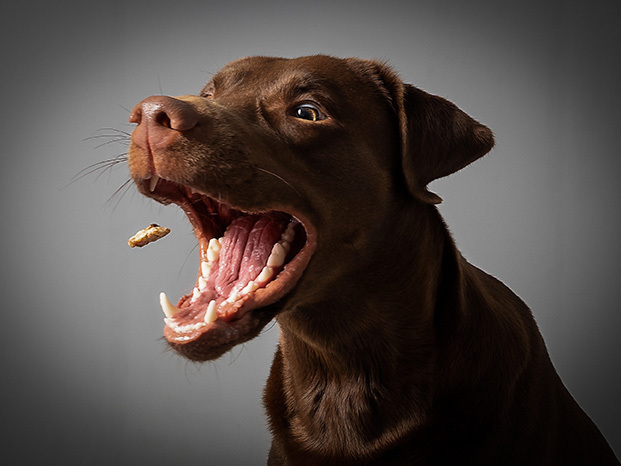Let’s find out how many teeth dogs have.
One of the many questions people ask themselves when owning a dog is: how many teeth does a dog have?
It seems obvious but it is not always apparent, and it is good to be informed about the number of teeth with regard to the dog´s health. So, let’s try and answer the question together.
Dogs and teeth: everything you need to know
Dog hygiene, as we know, is very important and the care of your dog’s teeth is vital. Healthy teeth, healthy dog! Just as with children, with regard to puppies we speak of milk teeth.
The first teeth, in fact, will fall out just as happens with children. Puppies initially have 28 teeth called deciduous teeth. These begin to appear about 15 days after birth and grow during the puppy’s first 8/10 weeks.
Anyone who has a puppy knows that the first teeth are really sharp! The little one will have a lot of fun gnawing on objects and toys until the final adult teeth appear. Buy lots of dog toys to protect the legs of your favourite table! The molars and premolars will appear between 5 and 8 months; eventually the dog will have 42 permanent teeth.

Sometimes the deciduous teeth do not fall out. In this case, contact your trusted veterinarian. A dog´s teeth are divided into four types: incisors, canines, premolars and molars. The incisors located in the front are responsible for “tearing” (for example meat) and also help in cleaning. In total there are 12, 6 at the bottom and 6 at the top.
The canines, on the other hand, are the pointed teeth located both in the lower and upper part of the mouth. They are usually called fangs. In total there are 4, 2 above and 2 below, and they are excellent for gripping and piercing. They are also shown by dogs as a deterrent to ward off unwanted guests. The premolars are located behind the canines; there are respectively 8 each in the lower and upper jaw. These are necessary for chewing.
Finally, the flat and very strong molars grow in the back of the dog’s mouth and are used to chop and chew food. There are a total of 10 – 4 in the upper jaw and 6 in the lower one. Here then is the answer to your question. Always remember that dental hygiene is essential for your dog to protect him from illness and inflammation and to guarantee a truly dazzling smile!
